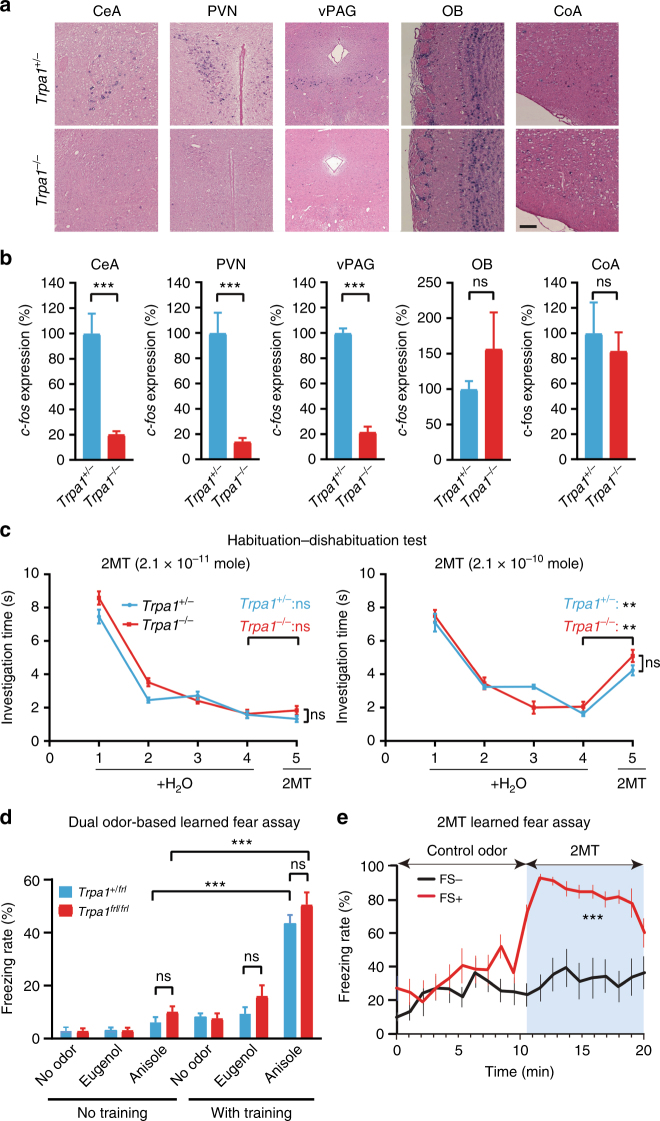Fig. 4.
Trpa1−/− mice can smell and learn to fear 2MT. a Representative images showing c-fos mRNA in situ hybridization (ISH) of the central nucleus of amygdala (CeA), paraventricular nucleus (PVN) of hypothalamus, ventral periaqueductal gray (vPAG), olfactory bulb (OB), and cortical amygdala (CoA) regions of the brains of 2MT-exposed Trpa1+/− and Trpa1−/− mice (bar: 100 µm). b Quantitative analysis of c-fos-positive neurons in the CeA, PVN, vPAG, OB, and CoA of Trpa1+/− and Trpa1−/− mouse brains (a). The relative measure (%) of c-fos signals of Trpa1−/− samples is normalized to those of Trpa1+/− controls. Data are presented as mean ± SEM (n = 4, Student’s t-test, ***P < 0.001; ns not significant). c Habituation-dishabituation test results of Trpa1+/− and Trpa1−/− mice exposed to filter papers containing H2O (trials 1–4) or 2MT (trial 5). 2MT dose was shown above the left and right graphs (left graph: n = 6 for both Trpa1+/− and Trpa1−/− mice, Student’s t-test; ns not significant; right graph: n = 5 for Trpa1+/− mice and n = 4 for Trpa1−/− mice, **P < 0.01). d Dual odor-based learned fear assay was performed with Trpa1+/frl and Trpa1frl/frl mutant mice by pairing anisole with electric footshock and using eugenol as a negative control. Data are presented as mean ± SEM (n = 10, Student’s t-test, ***P < 0.001; ns not significant). e Trpa1−/− mice were untrained (−FS) or trained (+FS) to fear 2MT by pairing 2MT exposure with electric footshocks. Eugenol was used as a control odor. Data are presented as mean ± SEM (n = 6, Student’s t-test, ***P < 0.001; **P < 0.01; *P < 0.05)

